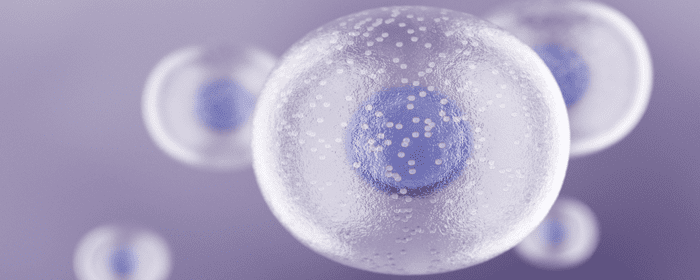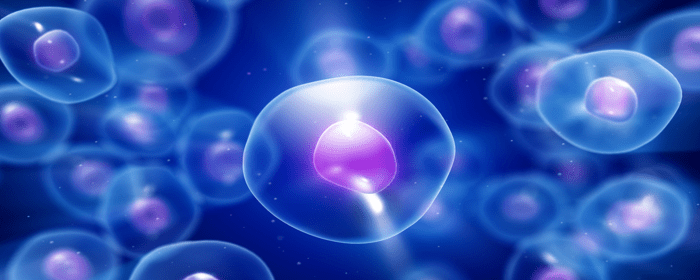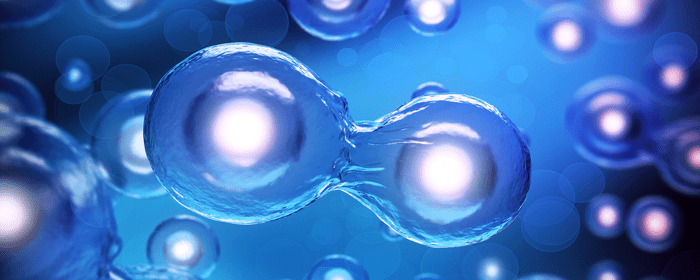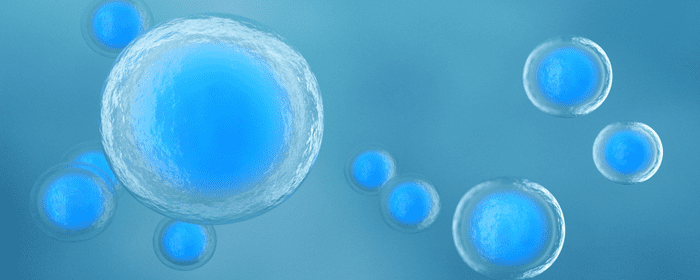
by admin | Mar 15, 2023 | Health Awareness, Osteoarthritis, Regenerative Medicine, Stem Cell Therapy
The Centers for Disease Control and Prevention states that 25% of all adults in the United States suffer from arthritis. Arthritis can be a debilitating condition that affects many areas of the body. One of the most common locations for arthritis, however, is the hands. If you have hand arthritis, there are some things you can do to find relief.
Medications
Many medications have been developed to reduce the symptoms of arthritis and allow you to use your hands with less pain or no pain. The right medications can help reduce swelling as well as joint discomfort.
Some common arthritis medications include:
- Acetaminophen
- Corticosteroids
- Nonsteroidal anti-inflammatory drugs
- Immunosuppressive drugs
While medications cannot stop the progression of the disease, they can help manage the symptoms and improve your quality of life.
Regenerative Medicine
Regenerative medicine, also known as stem cell therapy, uses stem cells to promote your body’s natural healing process. These cells target the affected joints, reducing inflammation, pain, and aching. Stem cell therapy can also increase joint flexibility and help with the regeneration of new cartilage.
Management Strategies
Physical exercises for your hands can help you regain some mobility in your joints. You can also turn to hot and cold packs. Cold packs reduce swelling and pain, and hot packs protect against stiffness. You also need to consider regular rest periods since rest can help reduce swelling.
If you smoke, quitting can also help reduce the symptoms of arthritis, as can losing weight if you are overweight or have diabetes.
Arthritis Help Is Available
You do not have to suffer through painful hand arthritis when there are treatments available that do not rely only on surgical procedures. With management strategies like hand exercises, as well as with medication and emerging treatments like stem cell therapy, you can get the relief you need.

by admin | Mar 1, 2023 | Mesenchymal Stem Cells, Stem Cell Research, Stem Cell Therapy
Osteoporosis is a common bone disease that occurs as a result of the body’s inability to create new bone as fast as the body is losing bone. Characterized by progressively weakened bones and decreased bone density over time, osteoporosis often results in fractures of the wrist, hip, or spine.
Currently, it is estimated that 10 million Americans have osteoporosis and an additional 44 million have low bone density considered significant enough to increase the risk of developing osteoporosis. Recent studies indicate that roughly 50% of women and 25% of men over the age of 50 will break a bone as a result of osteoporosis[1].
While traditional methods of managing osteoporosis include medication, regular participation in weight-bearing exercises, and eating a healthy diet, the condition cannot be cured through these current approaches. Recently, regenerative medicine, also known as stem cell therapy, has drawn attention as a potential new approach to regenerate bone tissue and as a way to treat osteoporosis.
Specific stem cells, known as mesenchymal stem cells (MSCs), are widely considered to be the most promising of all stem cells for regenerative applications – primarily because of their anti-inflammatory, immune-privileged potential and less ethical concerns than other forms of stem cells.
In this review, Arjmand et al. consider all the currently known effects of stem cell-based therapies, including MSC-based therapy, in the treatment of osteoporosis. Several studies have confirmed the relationship between osteoporosis and a clear reduction in endogenous MSCs’ ability to proliferate, differentiate, and ultimately form new bone. Considering this, MSCs have been the most common type of stem cell investigated for the treatment of osteoporosis in both animal models and humans.
The authors point out several advantages of using MSCs in clinical models, including their accessibility and ease of harvesting, immunosuppressive outcomes, and ability to differentiate. Arjmand et al also highlight evidence that indicates MSCs to be effective in this application most likely as a result of their paracrine effects and their supporting regenerative microenvironment ability and not solely a result of their ability to differentiate. Considering these observed paracrine effects, the authors believe MSC transplantation could open a host of new opportunities for the treatment of osteoporosis.
This review concludes by calling for further studies into stem cell therapy as a potential treatment for osteoporosis specifically to understand the outcome and biodistribution of MSCs after transplantation and to further identify important bone loss signaling pathways and genes specific to each individual.
Source: “Prospect of Stem Cell Therapy and Regenerative Medicine in … – NCBI.” 3 Jul. 2020, https://www.ncbi.nlm.nih.gov/pmc/articles/PMC7347755/.
[1] “Learn What Osteoporosis Is and What It’s Caused by.” https://www.bonehealthandosteoporosis.org/patients/what-is-osteoporosis/. Accessed 1 Feb. 2023.

by admin | Feb 15, 2023 | Spinal Cord Injury, Mesenchymal Stem Cells, Stem Cell Research, Stem Cell Therapy
Spinal cord injury (SCI) often results in damage to the spinal cord or the nerves found within the spinal column. Currently estimated to affect over 17,000 new patients each year in the United States, with 81% of these patients being male, the most common causes of SCIs are motor vehicle accidents, falls, acts of violence, and sports/recreational activities.
Current SCI treatment methods are unable to support the regeneration of the spinal cord and often lead to permanent nerve damage that affects motor and sensory function. The nature of SCI injuries often leaves patients unable to function at pre-injury levels and results in significant impacts on issues related to physical, mental, and socioeconomic health.
As more is learned about the potential benefits of regenerative medicine in the regeneration and repair of damaged cells and tissue, mesenchymal stem cells (MSCs) have emerged as potential candidates for the therapy management of SCIs; primarily because of their ability to release bioactive factors, their antiapoptotic effects, ability to inhibit scaring, and their ability to produce angiogenic effects.
Fracaro et al.’s review provides information about the damage from primary and secondary events after SCI, traditional treatments, and results of pre-clinical and clinical trials examining the use of MSCs as an SCI-tissue regeneration strategy.
Before sustaining an SCI, a wide range of inflammatory cells – all except for microglia – are found in blood vessels and throughout the spinal cord. Upon injury, it is common to observe immediate neuronal and glial death at the site of the injury followed by the development of an inflammatory process in the vascular and medullary region; it is this secondary response that results in the deterioration of the spinal cord and a general worsening of the condition. In the weeks and months following injury, remaining neutrophils and lymphocytes are found in the intravascular region, inactivated microglia remain in white matter, and macrophages are found in gray matter.
Traditional SCI treatments have demonstrated an inability to completely regenerate nervous tissue. Most of these traditional treatment methods attempt to reduce side effects and protect injured nerve tissue. Commonly used SCI treatments frequently include decompression surgery to relieve pressure and reduce hypoxia and ischemia; intravenous application of methylprednisolone sodium succinate (MPSS) to inhibit lipid peroxidation; neuroprotective agents to reduce cell dysfunction and death; and electrostimulation as a way to inhibit inflammation and reduce secondary injuries.
Despite the different techniques mentioned above, cell-based therapy is the only promising treatment aimed at regeneration. Stromal cells, and specifically MSCs, have demonstrated the potential for self-regeneration, differentiation, and immunomodulation. Although research has yet to determine exactly how MSCs promote functional recovery after SCI, they are widely thought to work through secreting different factors and biomolecules. MSCs have also demonstrated the ability to reduce inflammation, which is a very common secondary event occurring after SCI trauma.
The authors conclude this review by pointing out that a better understanding of the regenerative effects of stromal cells in the nervous system is required in order for the future development of cell-based therapies for patients with SCI.
Source: “Mesenchymal stromal cells as a choice for spinal cord injury treatment.” https://www.oaepublish.com/neurosciences/article/view/3329.

by admin | Feb 4, 2023 | Stem Cell Therapy, Degenerative Disc Disease, Mesenchymal Stem Cells, Stem Cell Research
Currently, it’s estimated that over 40% of adults over the age of 40 have at least one degenerative disc in their vertebrae; by age 80, the percentage afflicted with this condition is estimated to be over 80%. Characterized by erosion of the rubber-like discs between each vertebra of the spine, degenerative disc degeneration often results in chronic and debilitating back and neck pain. The condition is commonly accompanied by prolonged numbness in the arms and legs and pain that tends to radiate downward through the lower back and buttocks.
Adding to the seriousness of degenerative disc disease is the fact that chronic back pain continues to be a significant public health issue and among the leading causes of lost days of work and one of the most widely reported symptoms contributing to a diminished quality of life. In fact, a study conducted by the University of Maryland Medical Center found that the total cost of back pain (when factoring in medical costs, lost days of work, and the condition’s impact on wages) amounts to a staggering $560 to $635 billion annually.
Historically, chronic cases of degenerative disc disease required surgery. Unfortunately, surgical treatment of this condition not only demonstrated an inability to completely correct the conditions but also produced additional biomechanical problems and accelerated degeneration of nearby discs and portions of the spine.
Considering this, researchers began to investigate the potential use of autologous and allogeneic mesenchymal stem cells (MSCs) as options for treating degenerative disc disease.
In this review, Noriega et al. provide follow-up findings as a result of their long-term randomized controlled trial using allogeneic bone marrow-derived MSCs. As part of this trial, participants in the treatment group received an intradiscal injection of healthy allogeneic bone marrow MSCs while those in the control group received sham infiltration in the paravertebral musculature.
Outcomes of this trial were followed and recorded for one year after injection and subsequently followed up on 3.5 years afterward as part of this review.
As part of the original study and in addition to confirming the feasibility and safety of degenerative disc treatment with injection of MSCs, Noriega et al. found that patients treated with MSCs demonstrated rapid and significant improvements in algo functional indices when compared to those in the control group.
Examining outcomes nearly 3.5 years after original interventions, the authors reported no serious adverse effects of the investigation for either the treatment or control group. Findings also indicated that the improvements in both pain relief and disability improvement continued to increase in those receiving MSC injections while control patients did not show any significant healing after 3.5 years of receiving the intervention.
Of particular interest, the authors noted that patients treated with MSCs showed two distinct patterns – one subpopulation that showed a significant response to this treatment (responders) and another subpopulation that demonstrated no significant difference from patients in the control group (non-responders).
Noriega et al. also reported that observed structural changes in those receiving MSC injections occurring after year one of treatment were maintained over the period of 3.5 years while those in the control group continued to show a decrease in grading used to measure results of the trial.
The authors conclude that these long-term outcomes support the use of MSCs as a valid alternative for managing degenerative disc disease. Findings indicate that MSC injection as a treatment for degenerative disc disease provides effective and durable pain relief and objective improvements in disc degeneration.
Source: “Treatment of Degenerative Disc Disease With Allogeneic … – PubMed.” 1 Feb. 2021, https://pubmed.ncbi.nlm.nih.gov/33492116/.

by admin | Jan 5, 2023 | Mesenchymal Stem Cells, Diabetes, Regenerative Medicine, Stem Cell Research, Stem Cell Therapy, Umbilical Stem Cell, Wharton's Jelly
Mesenchymal stem cells (MSCs) are multipotent fibroblast-like cells found throughout the body and have been found to have self-renewing and multilinear therapeutic potential by providing new cells for tissue repair by replacing damaged cells.
Thought to stimulate repair and control the immune response through an expression of growth factors and other cytokines, MSCs are at low risk of rejection and repair tissue damage through immunomodulation, not by their ability to differentiate.
While MSCs can be isolated from a number of tissue sources, including bone marrow, peripheral blood, adipose (fat) tissue, umbilical cord blood, and umbilical cord tissue (Wharton’s jelly). MSCs derived from the human umbilical cords (UCMSCs) have been found to have significant advantages over MSCs isolated from other sources. These advantages include higher proliferation and self-renewal capacity and multilineage differentiation capability.
Unlike many sources of MSCs, the umbilical cord is considered medical waste, making the collection of UCMSCs noninvasive and eliminating ethical concerns associated with the collection of MSCs from other sources. These UCMSCs have been developed as effective “off-the-shelf” cell therapy for a number of conditions, including autoimmune diseases, and as a treatment for a number of emergency medical conditions.
This Phase 1 clinical study, designed and conducted by Chin et al., intended to determine the safety and efficacy of intravenous allogeneic infusion of UCMSCs in healthy volunteers and to determine the effective dose at which an immunomodulatory effect is observed. The findings of this study are intended to serve as a guideline and benchmark for future CVL-100 clinical research.
Analyzing the results of this clinical study, the authors report that there was no observed complication resulting from the infusion and no significant adverse event in either dosage group in the 6 months of follow-up. These findings led Chin et al. to conclude that UCMSCs infusion was safe among healthy subjects, results that were consistent with other UCMSC treatment-based studies.
The authors also reported that UCMSCs infusion posed no significant adverse effects in patients with type 2 diabetes. Despite the relatively small sample group of this study (11 subjects), the authors reported demonstrating an initial transient proinflammatory effect followed by a significant and prolonged anti-inflammatory effect.
In addition, Chin et al. report found that high-dose (HD) CLV-1000 infusion provided a significant increase in both hemoglobin level and MCV level that falls within the normal range. Biomarker assessment results also indicated that the HD group demonstrated a significant steady increase of cytokine IL-1RA from baseline up until 6 months of posttreatment. This finding is especially important as IL-1RA is a naturally occurring antagonist to the proinflammatory cytokine 1L-1.
The authors conclude that this study clearly demonstrates a difference in immunomodulatory effect between the high-dose and low-dose treatment groups, with the HD group demonstrating a significantly greater reduction of proinflammatory cytokine TNF-α and an increased level of specific anti-inflammatory cytokines within 6 months and in relation to those in the low dose group. Considering this, Chin et al. conclude that a CLV-100 dosage of two million MSCs per kilogram of body weight represents the optimal dose level for overcoming inflammatory conditions by displaying the best improvement in all parameters tested, absence of side effects, and SAEs.
The data collected in this study also suggests that this is the first study to report a significant reduction of globulin observed over the course of the study. This is important because globulin serves an important role in immunity. Additionally, increases in serum globulins are associated with several immune-mediated diseases, including rheumatoid arthritis, chronic liver disease, diabetes mellitus, and cancer.
Considering these findings, the authors of this study conclude that high doses of allogeneic MSCs could help exert beneficial effects of repair and healing.
Source: “High Dose of Intravenous Allogeneic Umbilical Cord-Derived ….” https://www.hindawi.com/journals/sci/2020/8877003/.

by Stemedix | Jan 2, 2023 | Regenerative Medicine, Stem Cell Therapy
Peptides can be beneficial for your general wellness. They exist naturally within your body, but they can also be administered through regenerative treatments.
What are these compounds, and how can they be used in regenerative medicine?
Peptides Are Strings of Amino Acids
Peptides are made of amino acids, the chemical building blocks for proteins. Your body makes and uses many different peptides for different purposes.
Some peptides generate beneficial tissues and compounds, like collagen or creatine. Others work through medications to combat certain health conditions, such as diabetes.
Peptides can boost your health and well-being in many ways when used in regenerative treatments.
Creatine Peptides for Muscle Growth
Creatine peptides may boost muscle growth and strength over time. These muscle-building peptides can be used in treatments that aim to alleviate musculoskeletal pain.
When your muscle fibers break down and are not repaired properly, you can experience pain, discomfort, and loss of mobility. Peptides can reinforce the structure and strength of your muscles to help you regain comfort and mobility.
Collagen Peptides for Skin and Hair Rejuvenation
Many supplements contain collagen peptides, which are believed to enhance the skin barrier. Collagen is a skin fiber that keeps your skin firm, elastic, and resistant to impact. As you get older, your body produces less collagen, and your skin starts to age.
With collagen peptides, your body can repair and reinforce your skin barrier to give you a more youthful appearance. They can also slow the skin aging process by giving your body the building blocks to make more collagen.
Collagen peptides can also enhance your hair health. If you struggle with hair loss and balding, collagen peptides could make a noticeable difference. Collagen fibers add strength and structure to your hair for enhanced growth.
Peptides for Joint Recovery
Joint health is important for mobility, comfort, and quality of life. Certain peptides may aid in joint recovery and regeneration to ease the painful symptoms of some joint problems.
When you lose cushioning around your joints due to tissue degeneration, you might experience pain and stiffness in these areas. Certain peptides may help rebuild these tissues to make movement and functioning easier and more comfortable.
Combined with stem cell therapy, peptides could reduce inflammation around your joints to give you a better quality of life.
Regenerative Medicine: Peptides for Healing and Relief
Regenerative medicine uses the power of peptides and other compounds to potentially manage symptoms and relieve pain. If you struggle with chronic health problems, this could be a game changer for your daily functioning and comfort levels.
Contact Stemedix today to learn more







 St. Petersburg, Florida
St. Petersburg, Florida
